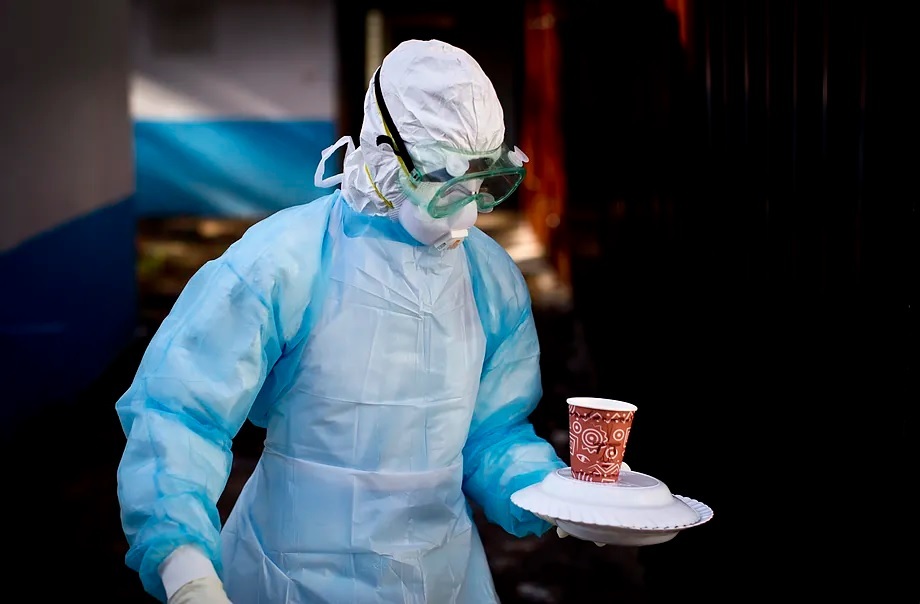In recent days, Rwanda has detected several confirmed cases of the Marburg virus disease, similar to Ebola, with at least ten deaths. The African country has officially declared an outbreak of this disease, for which there is no specific vaccine or treatment, while there are two suspected cases in Germany.
What is Marburg virus disease
Formerly known as Marburg hemorrhagic fever, it is severe and often fatal. It is caused by a virus that leads to severe hemorrhagic fever: its average fatality rate ranges around 50%, although in recent outbreaks, as indicated by the WHO, these rates have varied between 24% and 88% depending on the viral strain and case treatment.
Although Marburg and Ebola viruses are different, both belong to the Filoviridae family and cause diseases with similar clinical characteristics. It could be said that Marburg is a 'cousin' of Ebola.
The Marburg virus disease (MVD) was first identified in 1967 in the German city of Marburg (hence the name) after more than 30 people became infected and 7 died in laboratories working with cell cultures of African green monkeys (Cercopithecus aethiops) imported from Uganda.
However, it is considered that the natural host of the Marburg virus is the fruit batRousettus aegyptiacus, although these bats do not show detectable disease.
How is the Marburg virus transmitted
Initially, human infections have always been related to mining activities or contact with caves, the habitat of the mentioned Rousettus bats. Person-to-person transmission occurs through direct contact of injured skin or mucous membranes with blood, secretions, organs, or other body fluids of infected individuals, as well as with surfaces and materials contaminated with such fluids, like personal clothing or bedding.
The WHO emphasizes that cases of transmission to healthcare workers caring for infected patients have been described through close contact without proper infection control precautions. Transmission through contaminated injection materials or needle pricks is associated with a more severe form of the disease, a faster deterioration, and possibly a higher fatality rate.
The international organization stresses that as long as the virus is in the blood, it remains contagious, so transmission can also occur during funeral ceremonies where there is direct contact with the deceased's body.
The WHO points out that pigs can be hosts that amplify outbreaks of MVD, so preventive measures should be implemented in African pig farms to prevent animals from getting infected by contact with fruit bats.
What are the symptoms of the virus
The incubation period ranges from two to 21 days. The disease starts abruptly, with high fever, intense headache, and discomfort, often accompanied by muscle pain. After a few days, watery diarrhea (lasting about a week), abdominal cramps, nausea and vomiting may appear, along with extreme lethargy. Around day 5-7, many patients experience severe hemorrhagic manifestations, and fatal cases usually present some form of bleeding in various organs (due to an exaggerated immune system response). In fatal cases, death typically occurs 8-9 days after symptom onset.
Distinguishing MVD from other infectious diseases based solely on symptoms can be challenging. Various methods, such as enzyme-linked immunosorbent assay (ELISA), antigen detection tests, PCR, electron microscopy, or virus isolation in cell culture, are used to confirm Marburg virus infection. However, handling patient samples poses a very high risk and must be done under maximum biocontainment conditions.
The WHO reminds that there are no vaccines or antiviral treatments for MVD, although the use of some monoclonal antibodies in development and some antivirals used in clinical trials to treat Ebola, such as remdesivir and favipiravir, could be considered. Supportive therapy through oral or intravenous rehydration is crucial for these patients (due to the risk of dehydration from diarrhea and vomiting). This, along with treating specific symptoms, can improve survival.
The WHO indicates that in May 2020, the EMA granted marketing authorization for the Zabdeno vaccines (Ad26.ZEBOV) and Mvabea (MVA-BN-Filo) against MVD. The latter contains a virus called Vaccinia Ankara Bavarian Nordic modified to express proteins from the Ebola-Zaire virus and three other viruses of the same group (family Filoviridae). Although this vaccine could protect against MVD, its effectiveness has not yet been demonstrated in clinical trials.
How long does the Marburg virus persist
The WHO adds that the Marburg virus persists in the immunoprivileged organs of some convalescents, such as testicles and the inside of the eyes. In women infected during pregnancy, the virus persists in the placenta, amniotic fluid, and fetus; in those infected during breastfeeding, it can persist in breast milk.
Virus transmission through infected semen has been documented up to seven weeks after the patient recovers, although further studies are needed on the risk of sexual transmission, especially regarding the prevalence of viable and transmissible viruses in semen over time.
